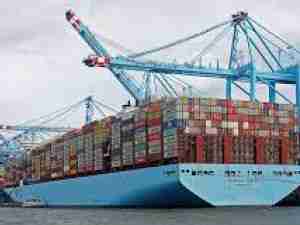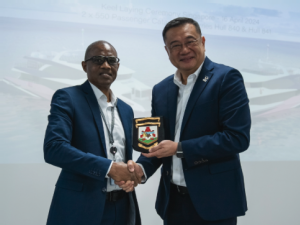The St. Lawrence Seaway recently launched its 48th commercial navigation season on an optimistic note, thanks in part to an expected rebound in steel imports from Europe and elsewhere. Fueling the optimism was the continued growth of the US and Canadian economies at an annualized level of about three percent, although analysts foresee a slowdown in the latter half of this year and in 2007.
The Seaway allows ocean ships to penetrate deep into the industrial heartland of the US and Canada, reaching such major consumer markets as Chicago, Detroit and Toronto.
After posting a small decline in cargo last year at 43.3 million metric tons, Seaway officials forecast that 2006 will constitute the best year on the inland waterway since 1999
'Trade patterns are strong for bulk commodities and general cargo,' said Richard Corfe, President and CEO of Canada's St. Lawrence Seaway Management Corporation. He predicted total volume this year will grow by about four percent, and attain 45 million tons.
'Imported steel was down by about one million tons last year, but we definitely see a rebound in 2006, with this cargo sector once more exceeding four million tons,' Corfe said at the official opening in Montreal of the entrance to the Seaway on March 23.
Shipping executives confirmed the improved outlook for steel, grain, and other commodities.
'We are seeing good activity for steel products into the Great Lakes,' said Paul Pathy, VP of Fednav Ltd., largest ocean-going user of the Seaway.
'US steel prices are high and there is booking internationally from Europe, Russia, Egypt and Brazil,' Pathy indicated.
'Lots of steel slabs and coils are coming in, and things look in pretty good shape for iron ore, grain and construction materials,' said Tom Brodeur, VP Marketing at Canada Steamship Lines.
Albert Jacquez, head of the Washington-based Saint Lawrence Seaway Development Corporation, noted that more and more barges are contributing to the growth of shortsea shipping on the waterway. For example, aluminum ingots are being barged from Trois-Rivieres, Quebec to Toledo, Ohio.
A flexible toll structure introduced last year for smaller shipments via the Welland Canal attracted some 215,000 tons of new cargo. It is being extended this year to the entire system, with a view to doubling this amount.
Commenting on future market prospects, Corfe reiterated the Seaway's vocation as an alternative for shippers using both West and East coast gateways, given its 50% unused capacity and, 'the continued steep growth in cargo volumes straining land-based arteries. Shippers are looking for more alternatives not captive to one route.'










